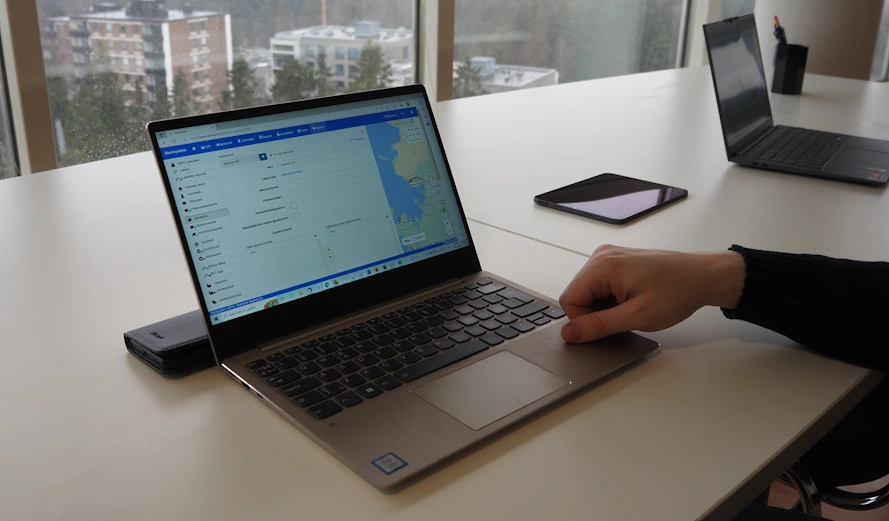Working time tracking is a mandatory statutory task for which the employer is responsible. However, the best reason to invest in working time tracking is not its mandatory nature. Working time tracking is worth implementing well because it increases trust and efficiency and prevents ambiguities. It can be used to collect accurate data for, among other things, payroll, invoicing and profitability calculations. The Working Time Act does not directly prescribe how time accounting should be implemented. Modern electronic time tracking However, it is a superior solution compared to manual accounting.
Time tracking is beneficial for both the employer and the employee. This article discusses time tracking in general, its benefits and how to organize it. By reading the article, you will also learn why electronic time tracking is clearly the best option today.
What is working time tracking?
Why is working time tracking done?
Working time tracking is a legal requirement and benefits employees and the company as a whole. Employers are required by law to track employees' working hours to ensure that maximum working hours are not exceeded. However, working time tracking should not be seen as a necessary evil.
Monitoring helps the employee clearly distinguish between work and leisure time. It helps the company to assess the productivity of the time spent. It is important to remember that it is the employer's responsibility to ensure that working hours do not exceed the permitted limits and that the employee receives appropriate pay for the work done. This provides security for the employee and builds trust between the employee and the employer.
Similarly, systematic time tracking provides security for the employer, as the employer can always prove that the salary has been paid correctly. A company can achieve significant benefits if the minimum number of working hours is spent on mandatory processes (payroll and invoicing). In addition, there are benefits from utilizing data in decision-making.
How does the Working Hours Act oblige the employer to monitor working hours?
The Working Hours Act obliges the employer to monitor the employee's working hours and the wages paid for them. What else should the hourly accounting include according to the Working Hours Act?
According to the Working Hours Act, the hours record should show:
The employer is responsible for ensuring that the employee provides the necessary information for the working time records. The employer's obligations are precisely defined in the Working Time Act. Deficiencies in working time monitoring can be detected, for example, during occupational safety and health inspections, where the implementation of these obligations is monitored. In such cases, the working time records should comply with the requirements.
The Working Hours Act can be found in its entirety. About FinlexIt is also a good idea to look for information From the Occupational Safety and Health Administration website.

The value of working time tracking is highlighted in resolving ambiguities
Working time tracking can usually help resolve ambiguities or disputes between employees and employers. Without reliable time tracking, resolving such situations can be challenging. Usually, ambiguities are related to, for example, the start of working hours, taking holidays or overtime.
It is the employer's responsibility to ensure that working time is monitored correctly. The employer should be able to provide an explanation of the timekeeping entries to the employee, their possible representative, such as a shop steward, and the occupational safety and health authority upon request.
If the employer has not taken care of working time monitoring properly, unclear situations are usually handled in court based on the employee's explanations. Neglecting or manipulating working time records can be a crime for the employer.
Working time tracking terms
Who is responsible for monitoring working hours in the company?
According to the Working Hours Act, the employer is responsible for monitoring working hours. Working hours monitoring is usually organised in such a way that the employee is designated in the employment contract as responsible for recording their hours. Often, the employee's supervisor is also designated to approve the working hours and absences of their subordinates. Companies may have slightly different practices, but in general, the responsibilities of the different parties are defined in broad terms as follows:
Employee responsibilities
Supervisor responsibilities
HR responsibilities
Management responsibilities

How will the transformation of working life change working time tracking?
Working life is undergoing a transformation and this directly affects the requirements for working time tracking. The way work is done and its nature is changing. The keyword in working life today is flexibility. Well-being at work is valued more than ever before. The increasing popularity of remote work, different working time formats, flexible working hours and local agreements are examples of these changes.
For these reasons, among others, it is even more important to organize effective working time tracking today. Working time tracking must be able to manage the changes associated with the transition so that time accounting and the processes based on it, such as payroll, remain reliable and transparent.
The employment contracts and special features of employment relationships used by the company must be taken into account when monitoring working hours:
Organizing working time monitoring
How should you implement time tracking? – why is electronic time tracking the best solution?
The Working Time Act does not specify how working hours should be monitored. Timesheets and Excel are therefore permitted methods of monitoring hours. These are still common methods of organizing hour monitoring in Finnish companies. The problem with these is the time-consuming and error-prone manual work caused by, for example, copying data. Overtime, bonuses and other similar rules requiring calculations further increase the working time spent on managing hour records.
Electronic time tracking is an increasingly popular way to record working hours. In electronic time tracking, work performance is recorded via an application, web service or logging device. The benefits of electronic time tracking are undeniable:
This article allows you to estimate the potential savings of electronic time tracking for your company.

Weaknesses of working time tracking on paper or in Excel
An electronic time tracking system has many clear advantages in automating processes and simplifying reports, which saves time and costs. In addition, data collection and process optimization are effortless when the data is constantly available and easily transferable. How is working time tracking on paper or in Excel inferior to electronic working time tracking?
Prone to errors
Although manual tracking, such as accounting in Excel, allows for the preparation of basic hourly reports in accordance with working time legislation, the results are prone to annoying errors. Entries can be unclear, copying errors can occur or forms can be lost. The risk is that the information required by law to be retained cannot be recovered if the hourly entries arrive, for example, via text message, Whatsapp message, email or paper notes.
Takes time away from employees and can feel like a chore
Scratching off time entries takes up employees' working time. In an electronic system, entries can be made with a time stamp: working time is automatically calculated from the start of the entry to the check-out. This way, there is no need to reserve time separately for making entries.
Furthermore, if employees find it tedious to record hours, they often only record hours at the end of the pay period. When the work done is no longer fresh in their memory, the entries can be inaccurate. This problem is solved in an electronic time tracking system by forcing jobs to be timed in real time as they are started and finished on site. When working time information is constantly available to everyone, it reduces ambiguity and increases trust.
Takes up LOTS of work time from supervisors and administration
Old-fashioned time tracking is especially burdensome for managers and HR departments. Extra working hours are spent reminding employees to return timesheets and the correct way to enter them. In addition, at least as much time is spent checking, interpreting, and copying data to other systems.
Often in small or growing companies, the working time spent on managing time tracking is directly taken away from, for example, company development, work management, and other management hours, because there is no separate HR department.

Choosing a time tracking system
When choosing a system, ease of use is often the most important criterion, but what other requirements should you set when choosing a suitable electronic time tracking system? What should you consider when purchasing? Read about purchasing time tracking here from the article.
Features of working time tracking – create a checklist of requirements

Make effective use of data collected through time tracking
Make sure that the administration understands the benefits of the purchase. Personnel will receive the new system in a completely different way when they can see concretely what it can be used for. Discuss with management, payroll accountants and the invoicing department how their work can be made easier with an electronic time tracking service. In an electronic system, data is available in real time and can be utilized immediately. In manual time tracking, data always lags behind.
Train employees on how to use the time tracking service and explain how they will benefit from the new system. For example, an employee can easily check their logged hours and real-time rolling balances from the service. A well-designed service reduces the time spent on time logging, which employees usually like.
How do different user groups benefit from electronic time tracking?
In addition to reducing the amount of time spent on hourly registration, there is also a benefit from more efficient data usage. What concrete benefits will different user groups receive in their daily tasks:

Integrations make it easier to utilize working time data
Integrations, or electronic data transfer, are where you get the most out of your time tracking. If data can be transferred electronically between systems, data usage becomes more efficient and you avoid wasting working time on manual transfers.
Integrations can be implemented for payroll, project management and invoicing, among other things. Electronic data transfer saves time for financial administration employees, who would otherwise have to spend their valuable working time on simple data copying tasks. You can read more about integrations from here.
It is important to handle the commissioning well
Implementation is a very important phase because if poorly implemented, the entire project can fail. If users do not know how to use the system or do not understand its benefits, this can lead to employee resistance. For example, an unsuccessful implementation can lead to employees continuing to make notes on pieces of paper or loudly objecting to using the system.
Involve different user groups already in the procurement phase so that their needs are heard. It is important for people to be able to influence their own work. Create an implementation plan and try to follow it. You can find more tips for procurement and implementation from this article.
Would you like to try mobile time tracking free of charge?
